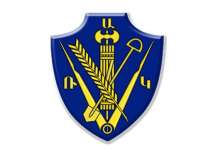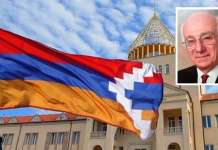The Kurds in the Middle East are within shooting distance of reaching their historic national aspirations; Iraqi Kurdistan is already a political reality because Iraq’s territorial integrity has been compromised to a nominal value only and the province of Kurdistan operates as a sovereign state within a fractured federation.
The partition of Iraq is a fact; the three entities it comprises it are held together out of political expediency for and by the forces which dominate the scene in the Middle East.
In the first place, the West is temporarily assuaging Turkish fears of a rising independent Kurdistan. The other component of the Kurdish drive for independence is the recapture of the Kobani region in Syria, by local Kurdish forces, creating another threat to exacerbate Ankara’s projected fears in the region.
But the main battle is fought within Turkey itself. President Recep Tayyip Erdogan precipitously abandoned peace negotiations with the Kurds and unleashed a war against the latter both in Turkey and Iraq with the short-term goal of intimidating the Kurds and gaining a parliamentary majority in the November 1 elections.
Although the Kurds, including jailed PKK leader Abdullah Oçalan, had compromised their political goals by settling for autonomy within the Turkish state versus full independence to facilitate peace negotiations, Mr. Erdogan threw aside his gains in his rush to win the elections. The bloody war that ensued may have some unintended consequences, which may include full Kurdish independence.
At that point, a historical Pandora’s box will be opened, as the Kurds will try to revive the Sevres Treaty, which had promised them independence. The same treaty, of course, has provisions for the Armenians. But since the Armenians were wiped out of their ancestral lands, it would not be easy for them to validate their treaty rights, while the Kurds have been inhabiting the territory, winning 90 percent of the argument.
Though there are no official statistics from the Ottoman era, the Kurdish and Armenian populations in the empire seemed to be roughly equal. Today, the Kurds are estimated to constitute one third of Turkey’s population, accounting for 20-25 million people.
During the Ottoman era, the Kurds came to rule over semi-independent principalities in historic Western Armenia. Ottoman modernization and centralization efforts directed against them were supported by the Armenians with the promise of forthcoming reforms, but as soon as the principalities were defeated the Armenians were cast aside. The Armenians attempted to involve the Kurds at times in their efforts at cultural and political progress. Attempts were made to use the Armenian alphabet for writing Kurdish, and some of the Armenian political parties at the end of the 19th century wanted to work for the liberation of oppressed Kurdish as well as Armenian peasants.
Nevertheless, the Kurds were used conveniently by the Sultan to expropriate the wealth of Armenians as well as massacre them. They also became executioners in the hands of the Ittihadists who organized the Genocide of the Armenians on their historic lands. Only a small part of the Kurdish population helped save some Armenian lives.
The Kurds as a group only realized that they had been ill-used when Kemal Ataturk rose to power and began his racist policy of homogenizing Turkey’s population.
As Hitler was clamoring for power in Europe to develop and implement his theory of Aryan supremacy, Ataturk was already at work on the same policy. His motto was “Ne Mutlu Turkum Diyene,” which roughly translates to “envy the person who claims to be a Turk.”
Of course, there was no room in this paradigm for the Kurds and the Alevis, who were being persecuted and whose identities were being denied.
After the Kurds realized that they had been betrayed, they began to apologize to the Armenians and began to protect the surviving Armenians, even when they were being bombed into submission during the 1930s.
Armenians have seldom banked on Kurdish resentment against the Turks. They have even less participation in their fight against the Turks. Although the Kurds have been apologizing to the Armenians in individual or group bases, they still don’t have a sovereign entity that can subscribe to that apology. We may guess what kind of policy that virtual entity may adopt but we do not have a claim of any participation in their struggle.
The Kurds themselves did not maintain sufficient documentation about their participation in the atrocities perpetrated against the Armenians.
Prof. Nikolay Hovhannisyan, one of the few Arabists among Armenian historians, has reviewed a book in the October 2 edition of Azg newspaper in Armenia. The book was written by a Kurdish historian in Iraq and published in Arabic in 1977 in Baghdad. The author, Kamal Mazhar Ahmed, does not mince his words in portraying the Kurdish participation in the persecution of the Armenians in Turkey, but he tries to shed light on the historic contradictions which have led to Kurdish association with the ruling power.
First, he dwells on the factors which united the Armenians and the Kurds, chief among them being exploitation by the government. But dividing factors outnumber those unifying them. There is the religious factor, which has been used to pit the two against each other. Then there was the policy of the Sultan to divide and rule. The historian underscores that the Armenians were advanced in terms of education and had amassed considerable capital, whereas the Kurds were the opposite. He also mentions that the Sultan encouraged fears that the Armenians may aspire toward independence.
The Hamidian military units which the Sultan had created to quell ethnic unrest were mostly composed of Kurds.
The author does not justify the Kurdish role in the Armenian massacres, as he writes in his conclusion: “We have to confess that blind fanaticism and cultural backwardness were those two major factors which motivated the Kurdish majority to participate in the extermination of the giavurs (literally heathens, meaning Armenians).”
At the conclusion of his review, Hovhannisyan mentions his discussion with a Kurdish activist, a PKK representative in the former Soviet republics, to whom he has posed a question about the future Kurdistan: “‘How do you and your party figure out the creation of a future Kurdistan? What territory do you have in mind?’ Guessing the thrust of my question, the Kurdish leader answered that their leader Oçalan believes that the Kurds and Armenians are friends; when the time comes, everything will be revealed.”
Professor Hovhannisyan, frustrated by the ambivalent answer, remembers French statesman Charles Talleyrand about the ruling French dynasty, the Bourbons, that “They have not forgotten anything and they have not learned anything.”
This pretty much outlines the prospect that Armenians should bear in mind as history moves towards the creation of an independent Kurdistan in the heartland of historic Armenia.
My more recent personal experience sheds more light on Kurdish aspirations. During the centennial commemorations, many Turks and Kurds arrived in Yerevan to publicly apologize to the Armenians for the Genocide. They placed wreaths at Tsitsernakaberd, and even cried with the Armenians. I was staying at the same hotel with the Kurdish groups and thus we had many discussions about the ongoing political situation in Turkey. During one of our discussions, I asked a direct question to one of the Kurdish leaders: “I know that at this time the odds are against the Armenians receiving their territorial rights in present-day Turkey, but at least in principle, what is their perception of Armenian claims?”
The Kurdish leader looked into my eyes and said, “You mean to say that after so much bloodshed, we have to take those lands and turn them over to the Armenians?”
Therefore, the Armenians must not hold their breath as to what Oçalan has to “reveal;” we already know his answer.















